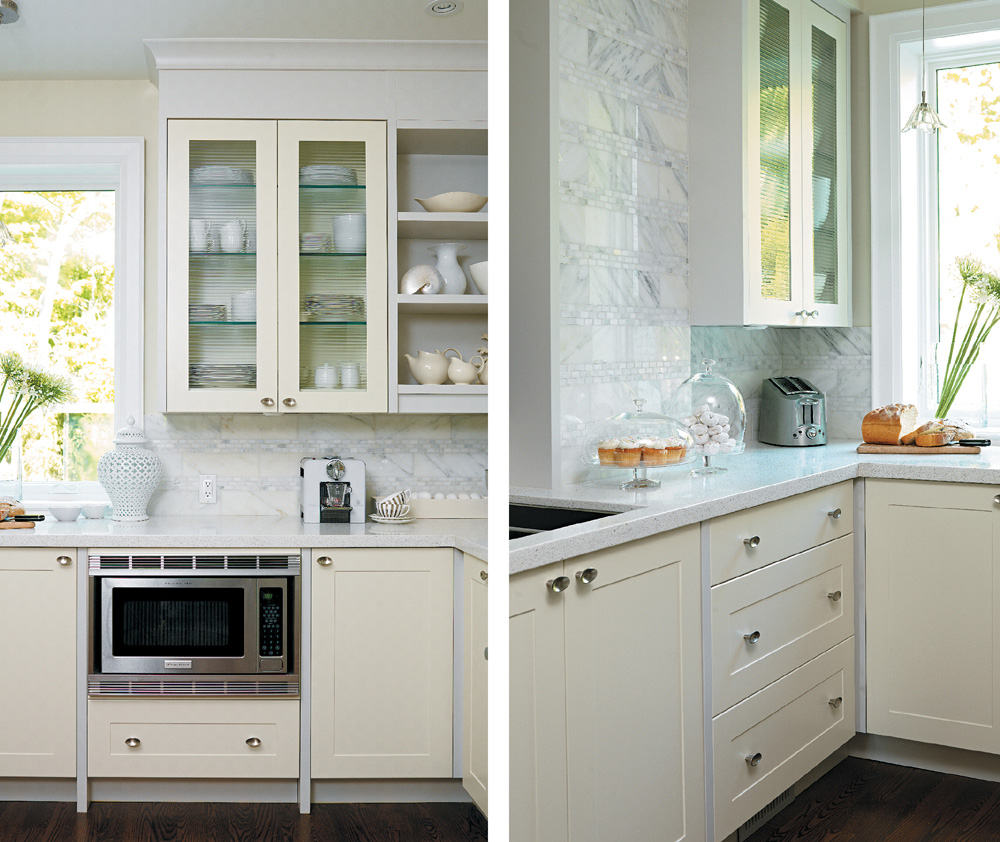
Every kitchen I design has to have a balance of practical storage and pretty display space. I’m a collector of decorative ceramics and glass, so I always like to have some of my treasures on display in my kitchen. Open shelves are best when used to display a single collection of a single colour, but clear glass isn’t very impactful and shows the dust, so stick to sculptural yet practical pieces that are used regularly. This way the shelves become a functional area for the everyday items you need close at hand.
There are two components to this thought. First, don’t cheap out on your hardware — it’s the final embellishment of your kitchen, so make sure to choose something you love. Second, think about whether you really want handles or whether knobs will do. Handles are often available in more trendy profiles, but the disadvantage is that you need to drill two holes to install a handle and only one for a knob. If your tastes change, you can always switch out a knob for a different style, but it’s not so easy with a handle to find an alternative with the same spacing for the screws. Something to keep in mind if resale is on the horizon . . .
An island is a common item on renovating wish lists, but I find a peninsula is often far more effective, especially when space is an issue. If you are thinking about removing all or part of the wall between the kitchen and the dining room, a peninsula may be your best option. It allows you to create a clearer delineation between a more polished dining area and the functional needs of the kitchen space, plus it offers great storage opportunities by allowing you to install back-to-back cabinetry servicing both rooms.
A bar counter with an overhang performs two functions: the raised bar section allows pull-up bar seats in an area that would be too cramped with an island, and, of course, the elevated counter also helps hide the chef’s unsightly messes.